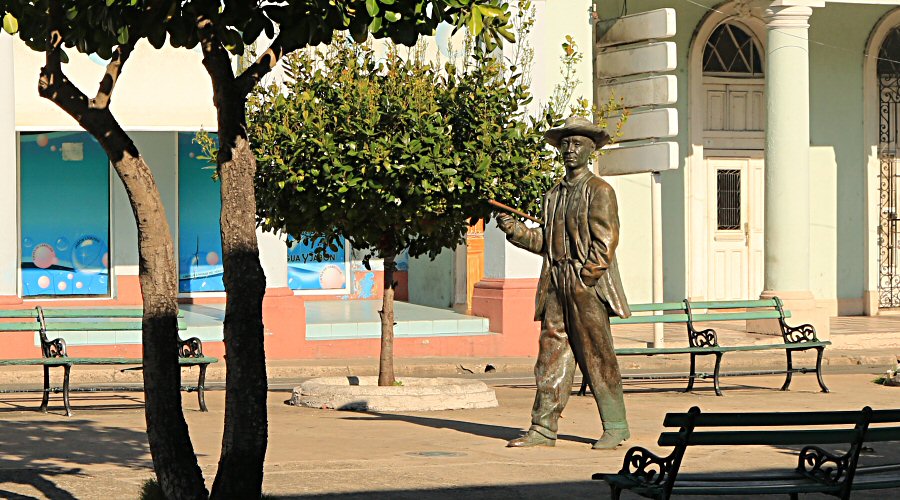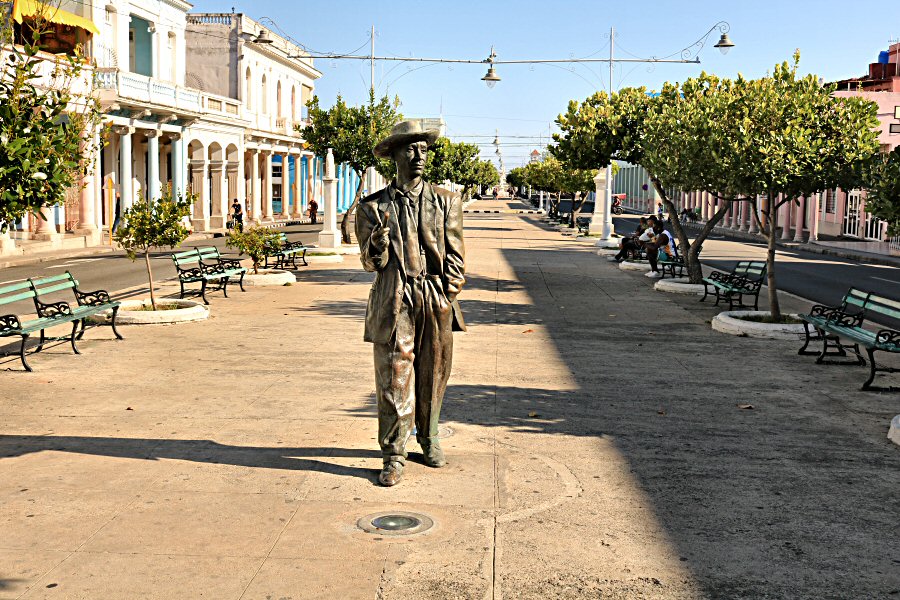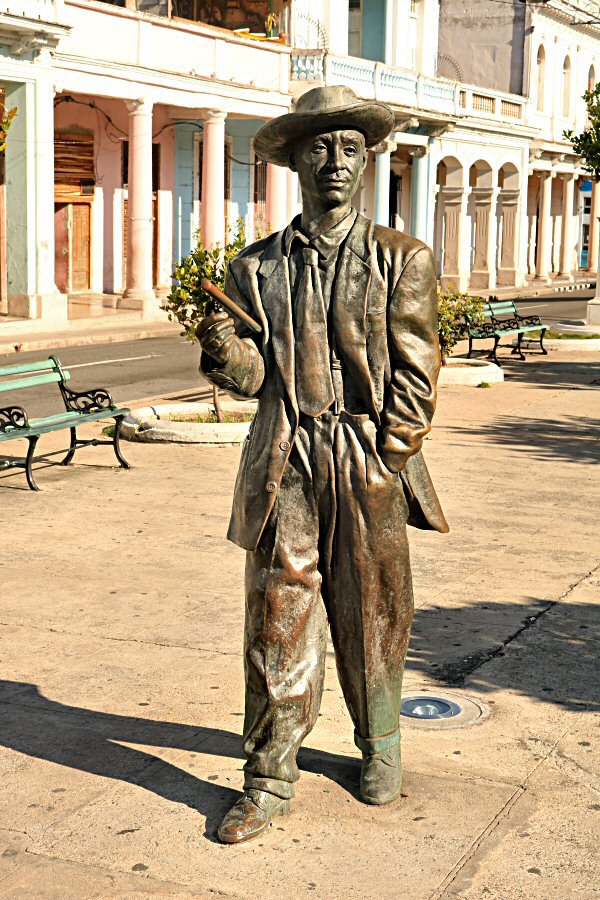

Bartolomé
Maximiliano Moré Gutiérrez (1919-1963), known worldwide as
Benny Moré, is one of the greatest figures of Cuban music.
He was born in Santa Isabel de las Lajas in the Cienfuegos
province. For this reason, it was decided to erect a statue
in memory of this well-known Cuban singer and composer in a
popular and frequented place of the city. The sculptor José
Villa Somerón that was living in Santiago but born in Santa
Isabel de las Lajas in the Cienfuegos province, was
entrusted with the project.
José Ramón Villa Soberón is known
particularly for his public sculptures in Havana, such as
the statue of John Lennon in Parque Lennon, the statues of
Ernest Hemingway (in
Floridita Bar), Mother Teresa of Calcutta (in
Jardín Madre Teresa de Calcutta), Che Guevara (in
Palacio Central de Pioneros Ernesto Che Guevara, Parque
Lenin) and
El Caballero de Paris in Plaza de San Francisco.
The statue of Benny Moré was
unveiled in the middle of the Paseo el Prado on November 27,
2004.
The bronze statue is
at life size (1,82 cm) and weighs about 300 kg. The
illustrious singer is represented like a passerby walking
through the busiest street in the city, with his
wide-brimmed hat and the baton in his hand, with which he
conducted his orchestra.

BARTOLOMÉ MAXIMILIANO MORÉ GUTIÉRREZ (BENNY MORÉ)
 Bartolomé
Maximiliano Moré Gutiérrez was born on August 24, 1919, in
the modest town of Santa Isabel de las Lajas, as the oldest
of 18 children of a poor black couple. This is where his
surname comes from, as his great-great-grandfather was the
slave to the Count of Casa Moré. Due to poverty, he had to
change schools, even leaving school in the fourth grade to
get a job. He worked as a truck driver.
Bartolomé
Maximiliano Moré Gutiérrez was born on August 24, 1919, in
the modest town of Santa Isabel de las Lajas, as the oldest
of 18 children of a poor black couple. This is where his
surname comes from, as his great-great-grandfather was the
slave to the Count of Casa Moré. Due to poverty, he had to
change schools, even leaving school in the fourth grade to
get a job. He worked as a truck driver.
Having an
extraordinary ear and voice led him to sing and play the
guitar from an early age. He bought his first guitar at the
age of 17, but a legend tells those 11 years earlier, he had
replicated that musical instrument with his own hands and
thus learned to play.
In 1940 he decided
to conquer Havana and traveled to the capital in a truck
loaded with cabbages. Thus, he began to play in bars and
cafes. Until Miguel Matamoros, guitarist, composer, and
singer, offered to join the band
Matamoros Trio, he spent four years between hotels,
restaurants, and brothels, acted for tourists on the docks
of Old Havana, and strolled through the marginal
neighborhood of Belén.
Moving to Mexico,
Bartolomé performed in many cabarets and party houses with
Matamoros. After a while, when Matamoros returned to Cuba,
Bartolomé stayed in Mexico, changing his name to Benny Moré,
and continued to sing in nightclubs and to make recordings
with many different orchestras, among them the creator of
the mambo, the legendary Dámaso Pérez Prado.
1953, he founded his
own orchestra, Banda Gigante, consisting of 21 musicians.
His orchestra had a format of a jazz band that would play
Cuban music due to the selected instruments. The first
performance of the Banda Gigante was on the CMQ radio
station in Havana and it was critically acclaimed. From 1954
his career began to rise at a dizzying pace. The
relationship between Benny Moré and the Cuban people grew
stronger with each passing day. Between 1956 and 1957 Banda
Gigante toured Venezuela, Jamaica, Haiti, Colombia, Panama,
Mexico, and the United States, where the group performed at
the Oscar Awards ceremony.
After the
Revolution, while many artists left the country, Benny Moré
refused to emigrate, even though tempting contracts were
offered to him: “Now is when I feel like a man with all
the rights in my country. Nobody takes me out of here. I'm
not interested in dollars."
Nightlife, alcohol,
endless tours, grueling dances, live broadcasts on TV and
radio were increasingly challenging Benny Moré. He got
sicker; it turned out that he had cirrhosis. After this
date, Benny put an end to alcohol; he was content with
washing his hands with rum and smelling it.
During a concert in
Colón, he bled heavily and vomited blood until he reached
Havana. Still, he stubbornly did not want to go to the
hospital. He said he wanted to see his children first.
When he arrived at
the emergency of the hospital on Avenida de Carlos III, his
body left him completely. He was in an irreversible period
due to pulmonary and renal complications and couldn’t come
out of this situation again. He died on the morning of that
night, on February 19, 1963, at the age of 44.
All over the
country, in Mexico, Venezuela, etc. music lovers drown in
deep sadness.
Although he never
had a musical education, 33 of his works top the list.
El Bárbaro del Ritmo has a special place among them. His
songs such as Dolor y Perdón, Bonito y Sabroso, Qué Bueno
Baila Usted, Cienfuegos and Santa Isabel de las Lajas are
among the unforgettable.
